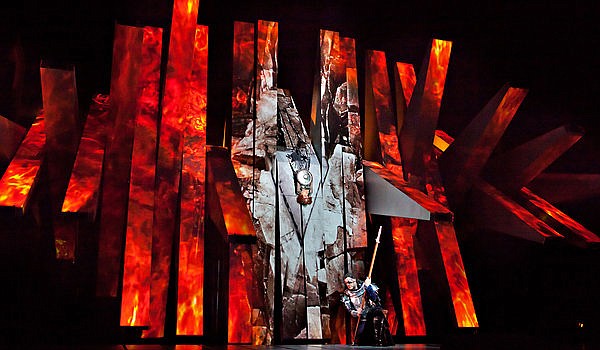 Facebook
Facebook
 X
X
 Instagram
Instagram
 TikTok
TikTok
 Youtube
Youtube


The struggle at San Diego Opera may have been only the prelude to a much bigger fight at New York’s Metropolitan Opera.
There have been several articles regarding the deficits at the Met.
The budget from last year was $311 million which resulted in a $2.8 million deficit. A deficit of less than 1% of the budget doesn’t seem to be a big deal, does it?
General director Peter Gelb’s first move was to talk about reducing labor costs by 16-17% and possibly locking out the unions. Suddenly, it was a big deal.
From what I’ve read, both the unions and the management are lacking in leadership. Gelb has been criticized for the price of productions that haven’t fared well with critics or audiences. The unions have comfortably settled into victimhood and traditional “food on the table” talk.
The unions have repeatedly mentioned the $160,000 “poppy field” set from Prince Igor. Why did the set cost so much? The Met didn’t buy plastic poppies but had them made in-house instead — by union workers.
Are the unions so ignorant as to bite the hand that feeds them?
The unions have also criticized “the machine” from the Met’s Ring Cycle. This machine was the central piece of all four of the Ring operas. The Met received a $20 million gift earmarked for a production of Wagner’s Ring. The price tag came in at $19.6 million and, once again, the set was made in-house by union labor.
It seems obvious that the poppy field and the machine are non-factors in this measly 1% budget deficit. Is it really just a 1% budget deficit or is this the start of something new for opera? It would appear to be an easy fix. Reduce the budget by 1%? Sure, no problem, take it out of the production costs.
In opera, the number-one production cost is labor. So much for an easy fix.



The struggle at San Diego Opera may have been only the prelude to a much bigger fight at New York’s Metropolitan Opera.
There have been several articles regarding the deficits at the Met.
The budget from last year was $311 million which resulted in a $2.8 million deficit. A deficit of less than 1% of the budget doesn’t seem to be a big deal, does it?
General director Peter Gelb’s first move was to talk about reducing labor costs by 16-17% and possibly locking out the unions. Suddenly, it was a big deal.
From what I’ve read, both the unions and the management are lacking in leadership. Gelb has been criticized for the price of productions that haven’t fared well with critics or audiences. The unions have comfortably settled into victimhood and traditional “food on the table” talk.
The unions have repeatedly mentioned the $160,000 “poppy field” set from Prince Igor. Why did the set cost so much? The Met didn’t buy plastic poppies but had them made in-house instead — by union workers.
Are the unions so ignorant as to bite the hand that feeds them?
The unions have also criticized “the machine” from the Met’s Ring Cycle. This machine was the central piece of all four of the Ring operas. The Met received a $20 million gift earmarked for a production of Wagner’s Ring. The price tag came in at $19.6 million and, once again, the set was made in-house by union labor.
It seems obvious that the poppy field and the machine are non-factors in this measly 1% budget deficit. Is it really just a 1% budget deficit or is this the start of something new for opera? It would appear to be an easy fix. Reduce the budget by 1%? Sure, no problem, take it out of the production costs.
In opera, the number-one production cost is labor. So much for an easy fix.
Comments